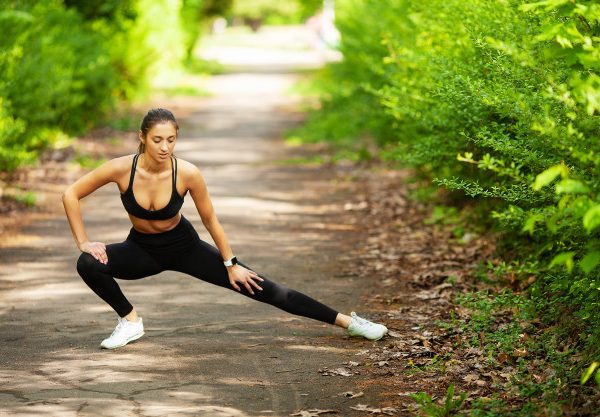These days time invites many to go out to practice sports. With early spring and high temperatures, flowering increases and with it allergies. Many are already sneezing, watery eyes, runny nose, and respiratory tract irritation.
In the 80s, pollen allergy was concentrated in the months of May, June and July. However, the trend of the last 30 years to suffer from increasingly warmer winters has generated what allergists call multi-seasonal pollinosis and allergies, increasingly, begin in February due to earlier flowering processes .
For those who suffer from any type of allergy, going out to play sports during certain dates can be a real ordeal. So we share these recommendations that will help you alleviate the rigors of spring and continue enjoying outdoor sports.

Identify the symptoms
Allergies imply a specific symptomatology that, in this case, runners or people who practice any sport in the open air, must know perfectly to avoid greater evils. We refer to symptoms such as conjunctivitis (itchy and stinging eyes, watery eyes and swelling), rhinitis (inflammation of the nasal or throat mucosa, sneezing, mucus and itching) and asthma (narrowing of the bronchial tubes, inflammation and difficulty breathing). These would be the clearest and it is essential to identify them.
Each type of plant produces different types of allergens, but which is the one that affects you? It is advisable to go to see the allergist to make a diagnosis, tell you what medication to take and what kind of environments to avoid when doing sports. Nowadays, many doctors recommend starting medication before symptoms start once the season approaches.
Choose the days well
Of course, before going out to practice your sports activity it is important to know the weather situation that will present itself to you that day. Choose well which day you go out to do sports. The windy and sunny days are the worst , because the plants have produced more pollen and the wind carries it. On the other hand, the moments after a shower are perfect for a pollen because the atmosphere is clean.
Choose the hours well
The first hours of the morning (5 to 10 h) and the last hours of the afternoon and night (19 to 24 h), are those that usually register the highest pollen concentrations. There are days when maybe a sudden change in the wind or rain helps to clean the air, but in general, if you practice sports between 11 a.m. and 6 p.m., it is quite likely that you suffer less from allergies .
Did you know that pollen can travel up to 600 kilometers driven by the wind? However, if there is a lot of humidity or even fog, it slows down and travels little. Therefore, one of the best times to play sports is after it rains or when there is fog. On the eltiempo.es website or app you can check the pollen concentrations in the environment. It is important to know which places have the highest concentrations.
Choose well where
The city, contrary to popular belief, is a worse place for pollution and diesel particulates. And it is that in these elements there are some components that can multiply by 27 the allergenicity. Therefore, you should avoid places near highways and industrial centers , where the atmosphere is hotter and symptoms are worse.
Also in open fields there are no buildings to stop pollen grains , and the allergy sufferer is exposed. Do you know a perfect place to do sports and that allergy does not bother you? The beach. There is no pollen by the sea and the humidity is beneficial. This means that many professional teams train by the sea in spring. However, do not suffer … because if you heed these recommendations, you will not have problems.
Hydrate to the maximum
During periods of allergy, the body often loses more fluid through tears and a runny nose. You also lose it by sweating, and that is why drinking a couple of liters a day is not worth drinking but at least 3 . You’ll notice the added hydration to remove mucus more efficiently, while reducing irritation to the airways. If you don’t drink, your brats dry up , more so than a person who doesn’t have any pathology. You also have a very good solution: The one recommended by the WHO: five pieces of fruit a day and two liters of water.
Another method to regenerate is to relieve nasal congestion with solutions of seawater with hyaluronic acid so that it can be used in a sustained way. Sea water is a great natural regenerator.

The importance of the breath
You have seen athletes wearing masks often. They are widely used by cyclists and must always incorporate approved filters and an exhalation valve. Always warm up properly before starting your activity and breathe through your nose, because that is where we have a truly effective natural filter. Twenty minutes of warm-up is essential, always favoring nasal breathing.
Shower and wash your clothes
It’s the only way allergies don’t haunt you. Get rid of the allergens impregnated in your hair and clothes, otherwise they will accompany you wherever you go.
All these recommendations will not make your allergy disappear, but they will help you reduce its symptoms and allow you to continue practicing outdoor sports. Even suffering from an allergic disease such as asthma should not represent a barrier to playing sports. Some famous athletes and elite athletes suffer from asthma without this having prevented them from practicing highly competitive sports. However, it is important to take proper control by your doctor and personal trainer.
